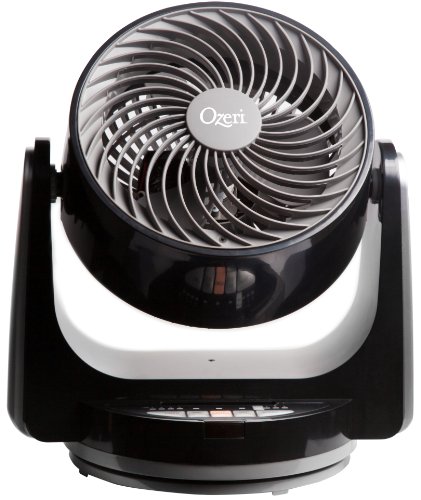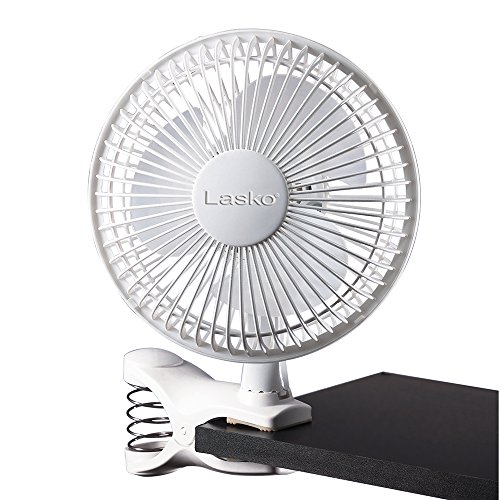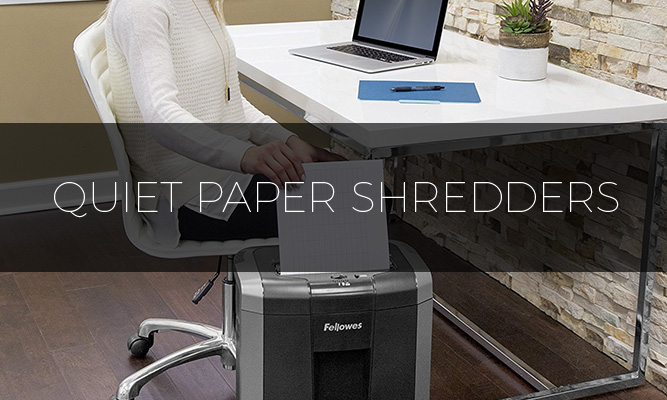Tired of feeling stuffy as you work at your desk? A high-quality desk fan will solve that problem instantly. The best quiet desk fans can produce steady airflow that keeps you cool no matter how long you work. Great for office desks, makeup vanities, and even gaming rigs, these fans have a lot to offer in terms of comfort.
But there’s just one issue that can turn a fan into a headache-inducing nightmare: the noise!
A noisy fan can be a huge productivity killer! Some will create a deafening hum that makes it impossible to get any work done.
Luckily, there are quiet desk fans that address this issue head-on. They are designed to produce soothing white noise, reducing overall noise levels while still keeping you cool.
Ready to invest in a new table fan? We have you covered. Here are some of our favorite quiet desk fans for productivity, focus, and comfort.
The Quietest Desk Fans – Comparison Table
| Product Image | Product name | Features | Star Rating |
|---|---|---|---|
 | Vornado Vfan Mini Classic Personal Vintage Air Circulator Fan | 36 to 43 decibels Simple knob controls Two-speed fan, Adjustable head 5 year warranty | 4.7 out of 5 |
 | Honeywell HTF210B Quiet Set Personal Table Fan | Around 54 decibels on the highest setting, Four power settings Oscillation feature, Built-in timer Compact footprint | 4.3 out of 5 |
 | Aluan Desk Fan Small | Approximately 40 decibels Copper brushless motor 360-degree adjustability Dual-speed fan, Sturdy base | 4.6 out of 5 |
 | OPOLAR USB Desk Fan | Less than 50 decibels of noise 40-degree tilt, Three-speed fan USB powered Single-button operation | 4.7 out of 5 |
 | Rowenta VU2660 Turbo Silence Fan | As quiet as 35 decibels Five-speed fan, Oscillating fan Lightweight and compact Remote control operation | 4.6 out of 5 |
 | Ozeri Brezza III Dual Oscillating 10" High Velocity Desk Fan | Low noise production Dual oscillation, Four-speed fan Remote control Compact base | 4.7 out of 5 |
 | Lasko FBA 2004W 2-Speed Clip Fan | Two-speed fan Rubber-backed clip Keyhole wall mount Full tilt and rotational adjustments | 4.4 out of 5 |
 | Fancii Small Personal Desk USB Fan | As quiet as 30 decibels Two-speed fan, Touch controls Super portable USB powered | 4 out of 5 |
 | Honeywell HT-900 TurboForce Air Circulator Fan | Around 50 decibels depending on placement Good coverage Three-speed fan, 90-degree tilt Durable plastic construction | 4 out of 5 |
 | Dyson Air Multiplier AM06 Table Fan | About 50 decibels Bladeless design Oscillation feature, Adjustable tilt Remote control | 4.6 out of 5 |
Quiet Desk Fans Reviewed For You!
Vornado Vfan Mini Classic Personal Vintage Air Circulator Fan

Looking for a retro fan that lasts? Check out this unit from Vornado! It’s a well-built fan with a vintage design. The entire unit is built out of durable metal, which is painted for a beautiful finish.
When it comes to performance, this fan doesn’t disappoint. It uses Vornado’s Vortex Action technology. It produces a surprising amount of airflow. Yet, it’s super quiet compared to other models on the market. Thanks to the two-speed settings, you can control the amount of air circulation you’re getting. There’s also an adjustable-tile head for multi-directional flow.
Key Features:
- 36 to 43 decibels
- Simple knob controls
- Two-speed fan
- Adjustable head
- 5 year warranty
Honeywell HTF210B Quiet Set Personal Table Fan

Here’s a modern tabletop fan that’s not going to take up a ton of desk space. It looks like a miniature tower fan and takes advantage of verticality to produce a cooling curtain of air.
There’s a lot of versatility with this unit. Not only does it have four power settings, but many of them are designed for quiet operation. You can set it to make soothing white noise or a light breeze for nighttime use.
The fan will also oscillate, ensuring that you’re getting maximum coverage.
Key Features:
- Around 54 decibels on the highest setting
- Four power settings
- Oscillation feature
- Built-in timer
- Compact footprint
Aluan Desk Fan Small

Next up, we have this compact USB fan from Aluan. A favorite on Amazon, this fan is a mere 5 inches wide. It doesn’t use up a ton of power. You won’t hear much sound, either!
The plastic fan has two-speed settings. While it doesn’t have an oscillating system, the fan is fully adjustable. The base rotates 360-degrees. Plus, you’re getting complete tilt control. So, there’s no limit on how you can position the fan.
Another important perk: the fan is stable. The bottom features four rubber feet. Not only do they keep the fan secure, but they isolate vibrations, too.
Key Features:
- Approximately 40 decibels
- Copper brushless motor
- 360-degree adjustability
- Dual-speed fan
- Sturdy base
OPOLAR USB Desk Fan

This simple USB fan from OPOLAR is great for on-the-go cooling. It comes with a USB cable that measures about 4.9 feet long. Plug it into any computer, USB power adapter, or power bank. Then, press the button on the back to turn it on. It’s as simple as that!
The single button on the back doesn’t just power the fan on. You can use it to select one of the three available speeds, too. While no oscillating feature is present, the fan does have about 40-degrees of tilt for easy positioning.
Key Features:
- Less than 50 decibels of noise
- 40-degree tilt
- Three-speed fan
- USB powered
- Single-button operation
Rowenta VU2660 Turbo Silence Fan

This Rowenta is on the pricier side, but it has plenty of great features that make it a worthy investment. First, the fan is exceptionally quiet. On the lowest whisper-quiet mode, it produces a mere 35 decibels, which is great for sleeping.
A simple electronic control panel on the base allows you to select one of the five speed options. There, you can also turn on the oscillation feature. Want to control the fan from bed? With the included remote control, you can do just that.
Key Features:
- As quiet as 35 decibels
- Five-speed fan
- Lightweight and compact
- Remote control operation
- Oscillating fan
Ozeri Brezza III Dual Oscillating 10″ High Velocity Desk Fan

This unit from Ozeri is designed with versatility in mind. In addition to four power settings, you’re getting dual oscillation! The oscillating motor moves laterally and vertically. As a result, you’re getting some of the best coverage around in a compact footprint.
Despite the oscillating motor, the fan doesn’t produce much noise at all. It’s a whisper-quiet fan that you can use in any environment. On the lowest setting, the fan is perfect for nighttime use! Thanks to the remote control, you can adjust your comfort levels without having to get up at all.
Key Features:
- Low noise production
- Dual oscillation
- Four-speed fan
- Remote control
- Compact base
Lasko FBA 2004W 2-Speed Clip Fan

If you’re looking for a no-frills fan that you can stick anywhere, this unit from Lasko may be for you. It’s a simple clip fan. There isn’t a sturdy base. Instead, you’re getting a spring-loaded clip. The clip is covered in rubber, allowing you to attach it to a shelf without having to worry about slipping.
The fan doesn’t have any powered air movement adjustments. But, you can easily tilt and turn the fan head to point it in your direction. From there, you can choose from one of the two power settings to get the airflow you’re after.
Key Features:
- Two-speed fan
- Rubber-backed clip
- Keyhole wall mount
- Full tilt and rotational adjustments
Fancii Small Personal Desk USB Fan

A fan doesn’t have to be huge to provide impressive power. This Fancii portable desk fan is evidence of that! The fan weighs less than eight ounces and is only about 4.72 inches long. But, it uses Twin Turbo Cyclone-Blade technology.
Two blades spin to produce significant airflow. There are two power settings available. Both of them are fully capable of improving air circulation in the room.
The fan is USB powered and features a simple swivel stand. With the stand, you can achieve 180 degrees of tilt.
Key Features:
- As quiet as 30 decibels
- Two-speed fan
- Touch controls
- Super portable
- USB powered
Honeywell HT-900 TurboForce Air Circulator Fan

Another great option from Honeywell, the TurboForce fan is a compact fan with a lot of power. Despite its small size, the fan can produce a strong gust of air that you can feel from about 25 feet away! There are three power settings in total, so you can easily adjust the intensity of the unit with one flip of a switch.
This fan is made out of durable plastic. It’s sporting a stable base and a tilting head with 90 degrees of rotation.
Key Features:
- Around 50 decibels depending on placement
- Good coverage
- Three-speed fan
- 90-degree tilt
- Durable plastic construction
Dyson Air Multiplier AM06 Table Fan

You can’t go wrong with a Dyson fan. This air multiplier fan doesn’t use blades. You can stick your hand right through! Thanks to this innovative design, the fan is easy to clean and exceptionally quiet.
The unit has 10 precise speed settings. Plus, there’s an oscillating motor and a built-in timer. Use the included remote to fine-tune the performance of the fan for ultimate comfort. The fan has a stylish and modern design that’s unmatched on the market. Luckily, it also has a quiet and efficient performance to boot!
Key Features:
- About 50 decibels
- Bladeless design
- Oscillation feature
- Adjustable tilt
- Remote control
What Makes a Desk Fan So Loud?
Before you start looking for a quieter fan to stay cool, it’s a good idea to understand where all that noise is coming from. Even small desk fans can produce surprisingly high decibel levels. But where is it coming from? The two components that contribute to noise most are the motor and the blades.
The motor is responsible for spinning the blades. From an engineering standpoint, these personal fans are pretty simple. You have a motor and a set of spinning blades that chop the air to create a cool breeze.
Older fans are rudimentary. They may have a basic brushed drill motor or a tiny fan belt that delivers the mechanical energy to the blades. While they still produce the motions you need to move air, older motor designs are anything but quiet.
If you want the quietest table fan possible, stick to models with modern brushless motors. These motors do not generate friction. Instead, they rely on magnets to generate power. So, there are fewer moving components, less heat, and far better performance!
As for the blades, material, shape, and overall design are key. Basic plastic fans are fine if you’re in a pinch. But, they won’t do you any favors in the noise department. Poorly designed fan blades only chop the air, creating that signature hum.
The hum can worsen with brittle blades that do nothing but collect dirt. If you want to minimize noise, choose a fan with sturdy metal blades. Or better yet, go bladeless!
Bladeless fans are all the rage these days. While we usually see them in tower fans, there are plenty of desk fan models out there, too. These units produce similar results to a traditional fan. But, the air multiplier technology is safer and more efficient.
How to Choose The Best Quiet Desk Fans
A cooling fan might not seem like a major investment. But, this is a device that you’re going to be using a lot more than you realize! The last thing you want to do is spend your money on a crappy fan that does nothing but creates noise.
There’s no shortage of fans on the market today. To choose the best quiet desk fans that suit your needs, you’ll need to consider the following factors.
Noise Levels
The most important thing to scrutinize is the noise the fan produces! If you’re sensitive to noise, even a small bump in decibel levels can make a huge difference in your comfort levels.
Some manufacturers will provide a decibel rating to give you a better idea of what to expect. Use that information to your advantage! Go for the lowest decibel rating you can find. For reference, most fans can generate anywhere between 30 decibels up to 70 decibels. Continual exposure to 50 decibels or more will cause ear fatigue, so find a unit that falls below that threshold.
There’s no such thing as a silent fan, but you can find air circulator fans that adopt design techniques that lower noise levels.
For example, you might see units with the advanced brushless motors or bladeless designs we went over earlier. Or, you might see fans with insulated fans and sealed motor housings to isolate vibrations. Whatever the case may be, these features make all the difference.
Speed Settings
What good is a fan if it can’t achieve proper air circulation? Whether you want a light breeze or enough force to cool the whole room, a fan with multiple fan speeds can get the job done. Most desktop fans out there will provide you with one or two-speed settings. Those settings control the speed of the spinning blades, producing more or less airflow depending on your needs.
For the most control, look for a three-speed unit. A high, middle, and low settings should cover all of your bases!
Coverage
Even the best quiet desk fans aren’t going to provide you with the same amount of coverage as a tower fan or pedestal fan. But, that doesn’t mean that you have to settle for a small and focused stream of air.
Plenty of fans on the market today can provide adequate coverage that spans a large portion of the room! To do that, these fans utilize oscillation. An oscillating fan is one that can move from side to side.
You might also see features like adjustable-tilt fan heads. Whatever the case may be, having some adjustable elements can do a lot to improve coverage and ensure that you’re getting the level of comfort you’re after.
Style
Fans come in a wide variety of styles! This factor comes down to personal preference, so don’t be afraid to get one that suits your interior decor! You can find retro fans with a signature vintage touch. Or, you can go for something a bit more modern. The possibilities are endless!
Power Source
Most fans on the market today, including tower fans and pedestal fans will use a standard 120-volt outlet. But, there are also some alternatives. Small personal desk fans might use replaceable or rechargeable batteries. They are best if you don’t want to limit where you can use the fan.
Another common power source is USB. With a USB desk fan, you can plug the unit directly into your computer or any compatible power brick. Many manufacturers even implement USB ports on the fan’s base so that you don’t have to sacrifice your computer’s functionality.
Footprint
The last decision-maker you should think about is the fan’s size and overall footprint. Desk fans are supposed to be small and compact. Who wants an over-sized fan taking up space on their desk, right?
Consider how much available space you have on your desk and choose accordingly. Don’t forget to pay attention to the base, too. Look for weighted bases with rubber feet to ensure that your fan stays put as you work!
Conclusion
A quiet desk fan is a worthy investment that can make your days a little more bearable. Instead of attempting to drone out that incessant loud humming, you can focus on your work while staying cool! Check out one of our recommended picks and see for yourself. You won’t regret the upgrade!




